ClusterMinder Plugin
This plugin is supported on UFM Enterprise Appliance only.
The ClusterMinder plugin collects telemetry data from multiple data sources and aggregates, streams and visualizes the backend data. The plugin can cluster/group aggregated data from multiple machines that allows operational anomaly and misconfiguration detection. The plugin provides Cluster-wide histograms of hardware telemetry which details compute node configuration and inventory, PCIe bus, hardware information (SN and FW version) and health alerts of all relevant devices.
The plugin can be deployed as a container and supports multiple data sources
1.1 Data Source Supported Types and Devices
Type | Devices |
Redfish | AMI DGX H100 Dell PowerEdge XE9680 Dell PowerEdge R760 Dell PowerEdge R750 Dell PowerEdge R760xa Supermicro SYS-421GE-TNRT3 Supermicro SYS-421GE-TNHR2-LC-TW008 Supermicro SYS-821GE-TNHR AMI ESC N8-E11 ASUSTeK COMPUTER INC |
Redfish on DPU | Nvidia |
Switch | MLNXOS, Cumulus, NVOS |
Unmanaged Switch | UFM Telemetry |
DTS ( DOCA Telemetry Service) on DPU (Bluefield) | DTS: version > 1.12 DPU OS : ubuntu 20/22 |
DTS ( DOCA Telemetry Service) on Host | |
NMX | NMX-C or NMX Aggregator |
DDN | DDN storage |
CDU (Coolant Distribution Unit) | XDU1350, XDU450, XDU R100 |
InRow | Vertiv |
Satec | SATEC PM 130,135,175 |
For Redfish we auto discover (with best effort) devices if it is not supported for example: GB200/300 compute tray/switch tray, GB200 power shelf. Do note this takes some time (up to 15 minutes in the case of GB200 and GB300).
The plugin can be deployed using the following methods:
On the UFM Appliance
On the UFM Software
To deploy the plugin, follow these steps:
The plugin is included in the default plugin bundle available at NVIDIA's Licensing Portal .
Load the downloaded image onto the UFM server. This can be done either by using the UFM GUI by navigating to the Settings -> Plugins Management tab or by loading the image via the following instructions:
Log in to the UFM server terminal.
Run:
docker load < <path_to_image>
After successfully loading the plugin image, the plugin should become visible within the plugins management table within the UFM GUI. To initiate the plugin’s execution, simply right-click on the respective in the table.

After the successful deployment of the plugin, a new item is shown in the UFM side menu for the ClusterMinder plugin
Managing data sources with ClusterMinder is intuitive and efficient. Users can easily add new data sources, update existing ones, or remove those that are no longer needed. This feature ensures your data is always current and relevant.
4.1 Example of Adding Data Source
Adding hosts is done through the "Data Sources" section. To add a data source,
you start by selecting the appropriate tab, clicking

Note: we support adding hosts in hostlist format for exmaple: agx[01-10].
for example:
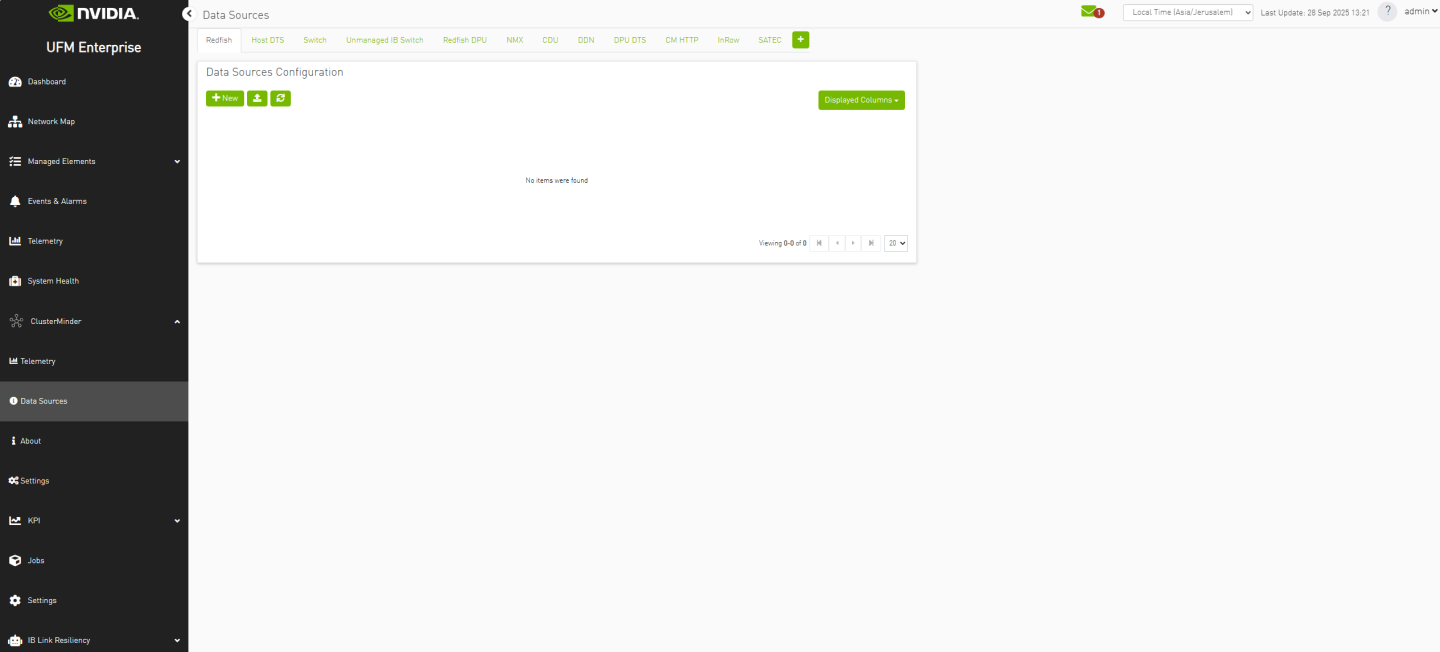
4.2 Example of Adding a Redfish Host
After pressing the



For example:

Note: when adding multiple redfish hosts, they should all be of the same model and vendor. If this is not done it can cause issues with data collection and presentation.
4.3 Example of Adding a Switch Host
After pressing the



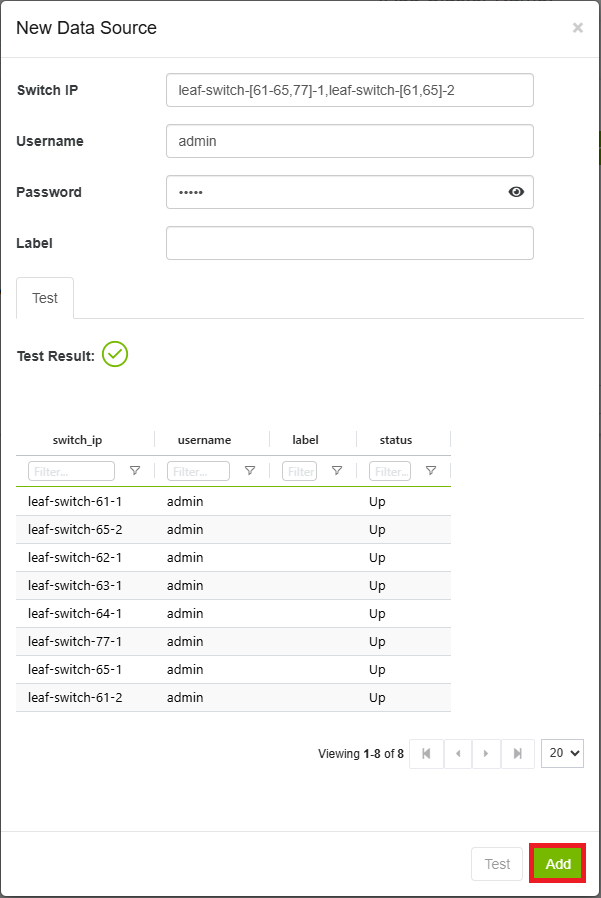
Note: when adding multiple switch hosts, they should all be of the same OS type. If this is not done it can cause issues with data collection and presentation.
4.4 Example of Adding a User Generated Data Source Type
Pressing the


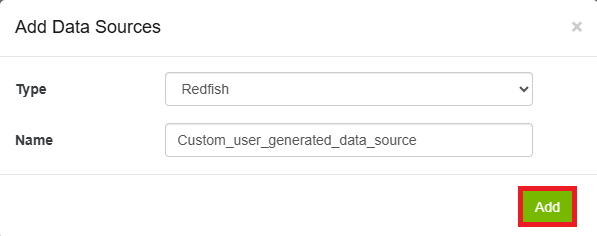
Type dropdown has "Redfish","Switch","Host DTS", " CM Http". These are the currently supported data types. Requires a page refresh to appear in the sidebar.
4.5 Example of Removing Data Source Endpoint
Removing hosts is done through the "Data Sources" section. here you can right click any available host and click the remove option.

You can also use the

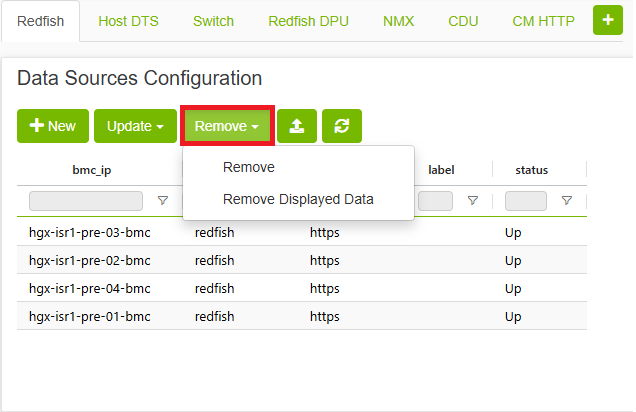
to open the Remove Data Sources form that has the IP field. After choosing the appropriate IP you can click the


4.6 Example of Updating Data Source Endpoint
Updating hosts is done through the "Data Sources" section. here you can right click any available host and click the update option.
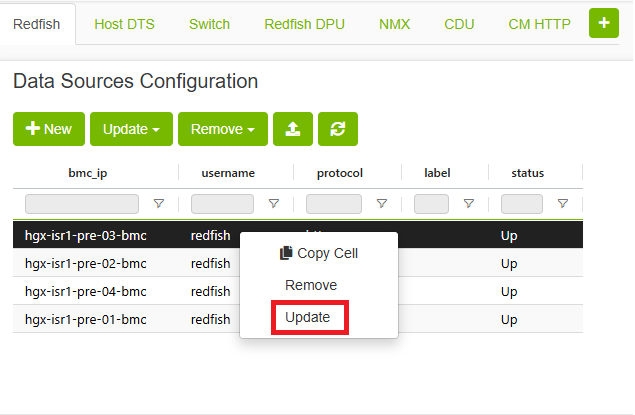
You can also use the




5.1 Data Tab
The Data tab provides a comprehensive view of all your data in one place, organized in an easy-to-navigate tree or table view. Additionally, there is a group view tab that allows users to see differences in host groups, helping to identify and understand misconfigurations within their data. This feature allows users to quickly access and navigate through their data, making it easier to perform analyses and derive insights.
5.1.1 Redfish Data Example
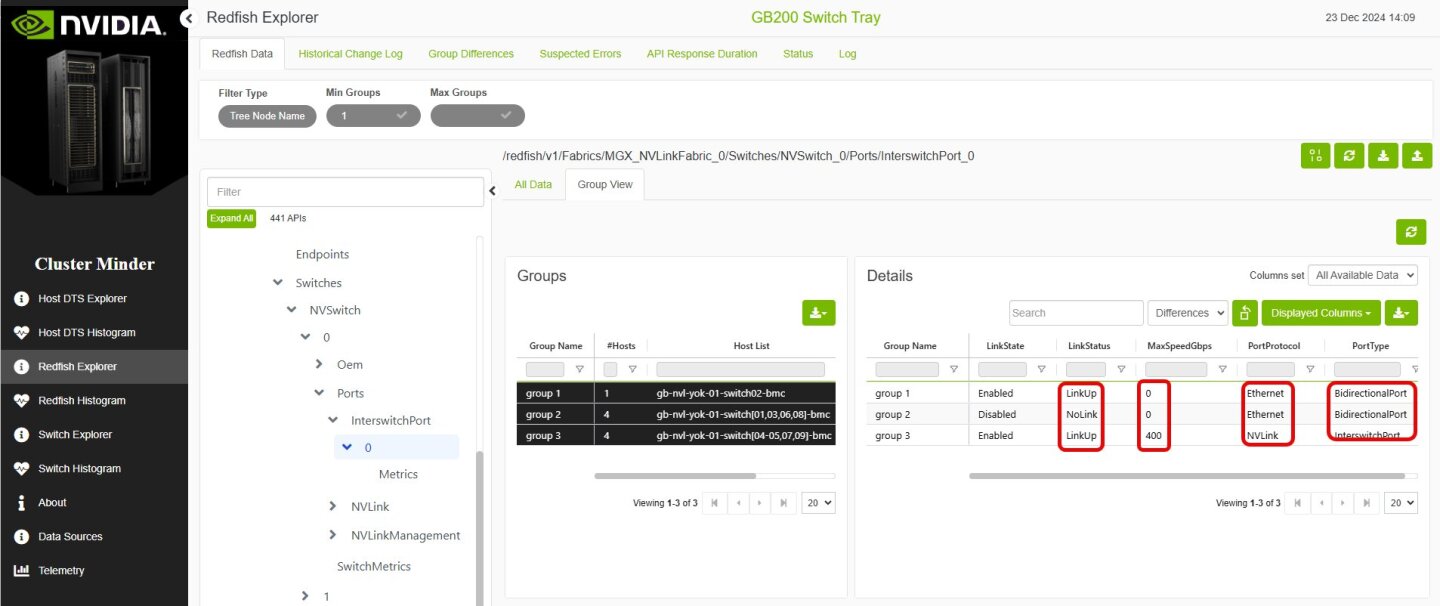
5.1.2 Switch Data Example
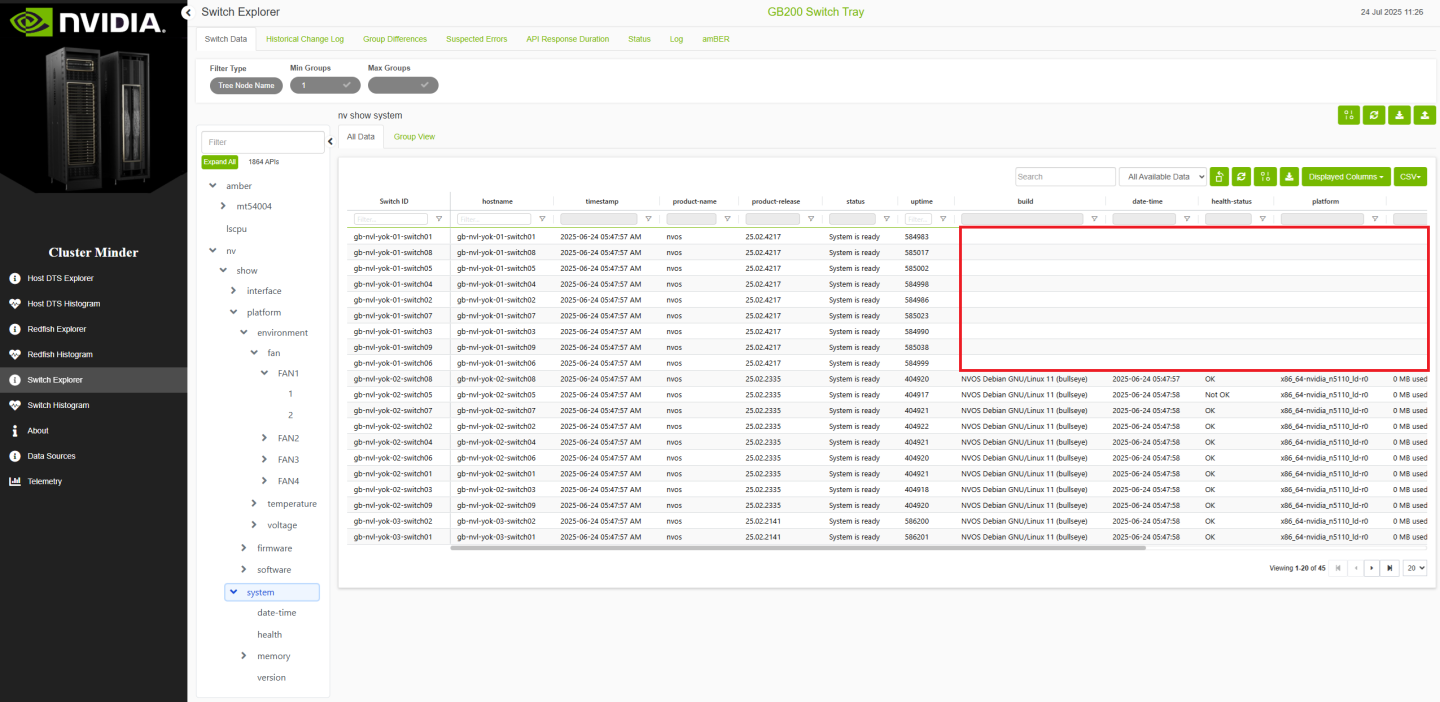
5.1.3 Additional Features
Filter Bar
The filter allows to choose specific API based on frequency level. The search box allows to search for substring in the API or a specific data field. You can also choose to only show APIs with a minimum or maximum number of groups .

Group View
The group view inner tab allows to view endpoints divided to groups based on differences in data.

5.2 Group Differences Tab
The “Group differences” tab helps users identify and understand misconfigurations within their data. By comparing different data groups, users can easily spot discrepancies and take corrective actions. At the start of the report, there is a summary table that lists the most problematic hosts in descending order based on the number of appearances. This table provides a quick overview of the hosts that require the most attention, allowing users to prioritize their troubleshooting efforts effectively. Additionally, each table in the report (besides the summary table) includes the API that provided the data, a column for the number of hosts per group, and the fields where their values differed, ensuring transparency and traceability of the information presented.
There is a switch button that enables component view.
5.2.1 Redfish Group Differences Example
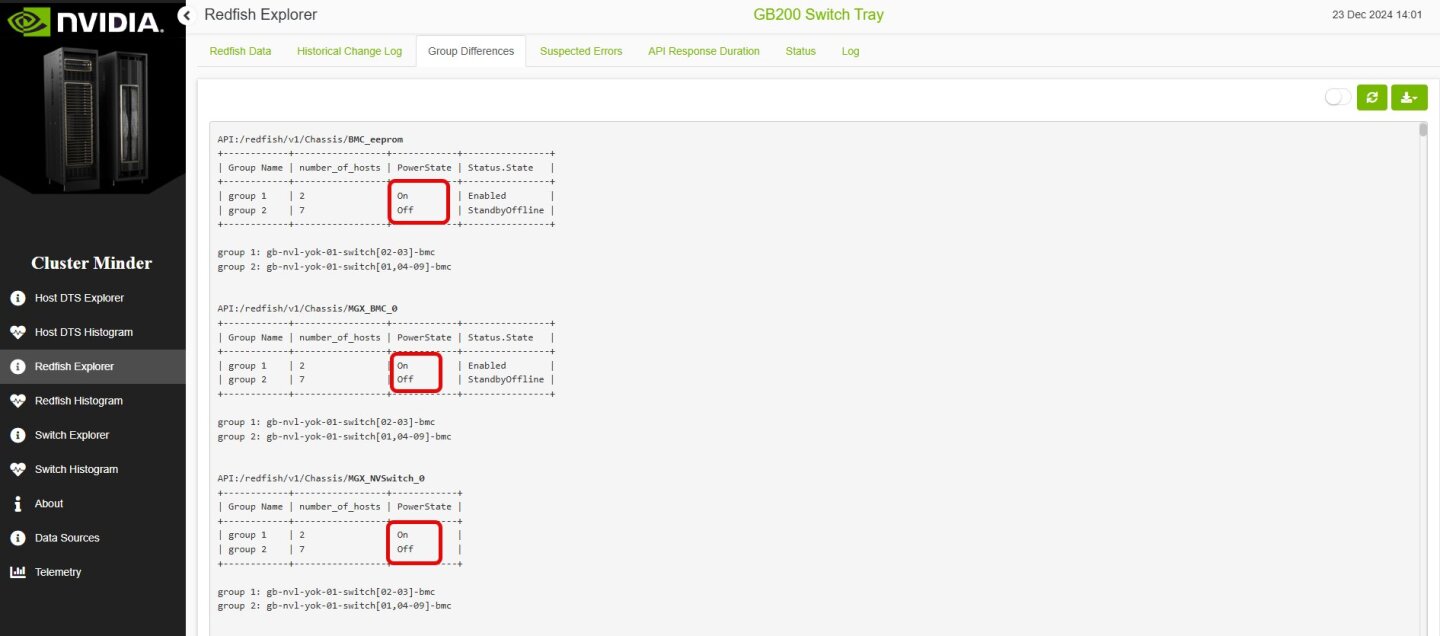
5.2.2 Switch Group Differences Example

5.3 Suspected Errors Tab
The “Suspected Errors” tab provides a comprehensive report on APIs that have returned values flagged as potential issues. This report is crucial for maintaining the reliability and integrity of your data analysis. At the start of the report, a summary table lists the number of hosts with errors compared to the total number of hosts, giving users a quick snapshot of the overall health of their data environment. This summary helps prioritize troubleshooting efforts and allocate resources effectively. Each entry in the report details the host ID, the specific fields where values were problematic, and the problematic values themselves. These values are highlighted in red or orange to indicate the severity of the issue, with red denoting more critical problems and orange indicating less severe ones. This color-coding allows users to quickly assess the urgency of each issue and take appropriate corrective actions.
There is a switch button that enables component view
5.3.1 Redfish Suspected Errors Example

5.3.2 Switch Suspected Errors Example
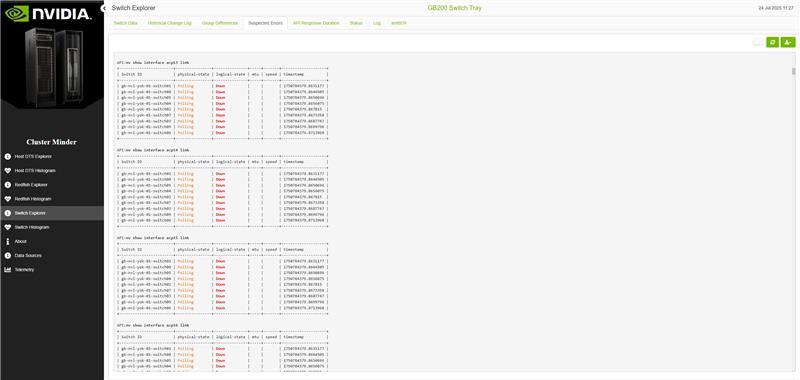
5.4 Alerts and Alerts Rules Tab
The Alert tab displays all fields whose values meet or violate specific thresholds defined by the user. The Alert Rules tab provides an overview of all the rules the user has created. Currently only supported on CDU.

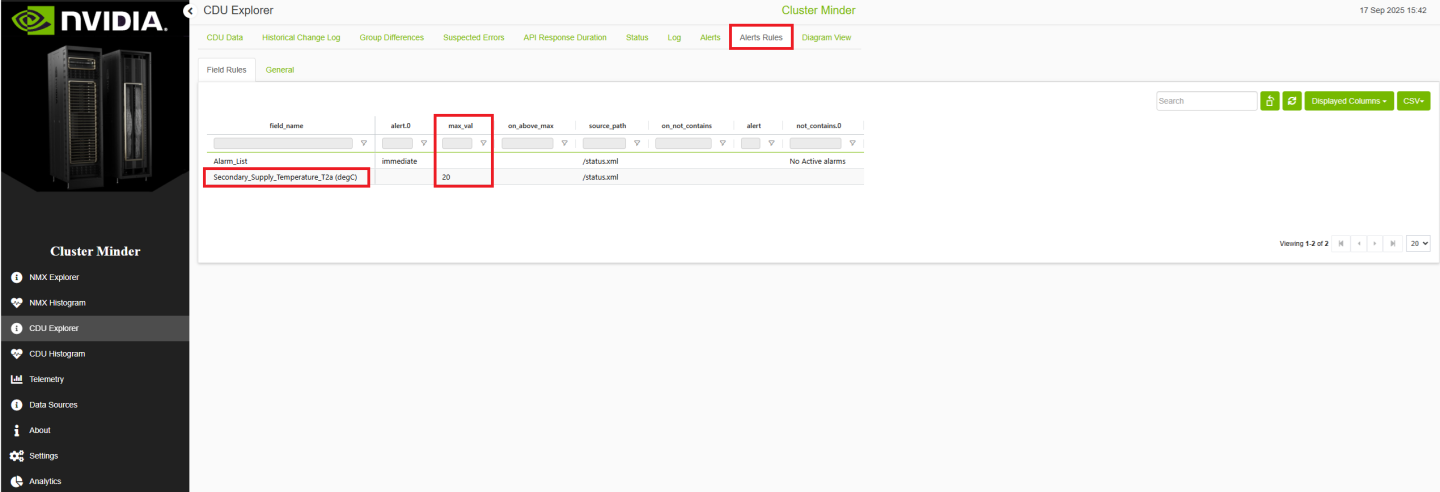
5.5 Additional Features
5.5.1 Historical Change log Tab
Displays fields that have had their values changed, sorted by SRC ID and API.
5.5.2 API Response Duration Tab
Displays the duration of each APIs data collection.
5.5.3 Log Tab
The log page in Cluster Minder provides a comprehensive view of all product logging activities. This feature is essential for tracking changes, monitoring system performance, and diagnosing issues.
Visualizing data is made simple with ClusterMinder’s histogram feature. Histograms are premade depending on the type of data source as well as the make and model. The histograms range from rpm speeds, voltages, wattage, amperage, temperatures (Celsius) and more. By clicking the histograms, users can filter specific hosts or values, allowing for a more targeted analysis. Additionally, using the dropdown menu, users can further filter the histogram bars to hone in on specific data subsets and attributes, enhancing their ability to derive meaningful insights.
6.1 Redfish Histogram Example

6.2 Switch Histogram Example
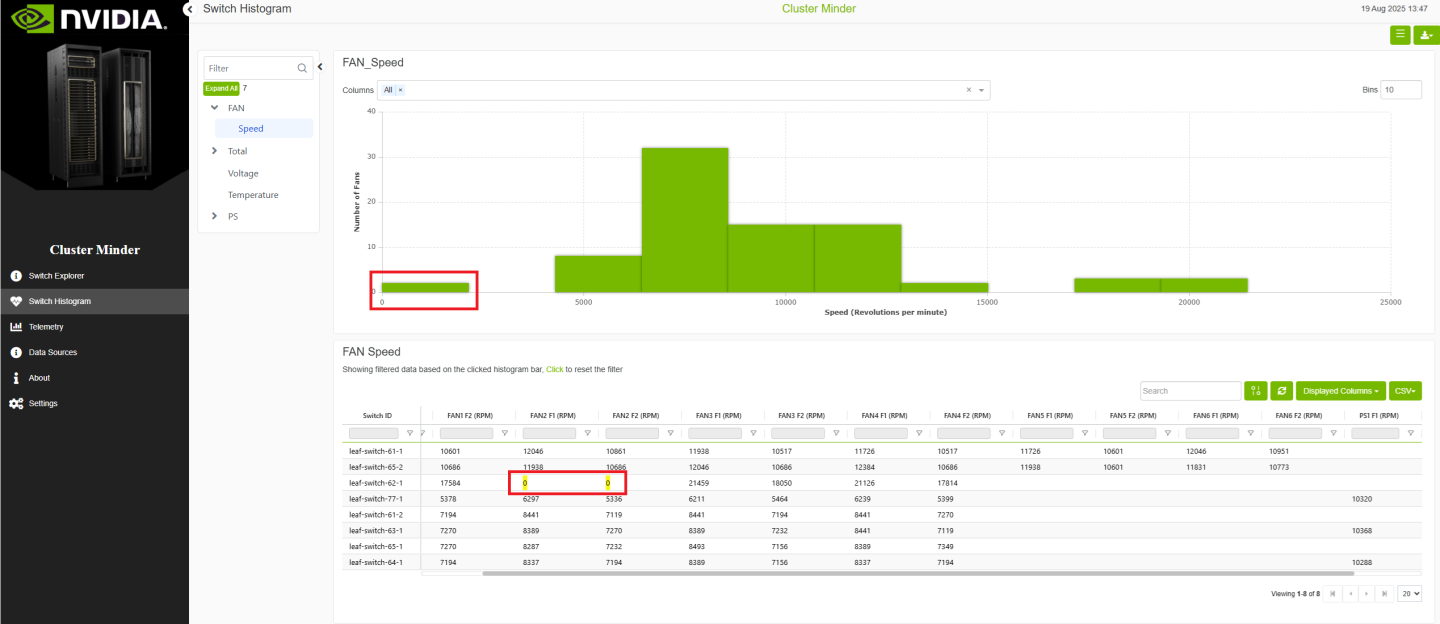
ClusterMinder’s telemetry page allows users to create custom graphs based on their data. Additionally, there are premade graphs available depending on the telemetry data the data source provides. This feature provides flexibility in how data is displayed and analyzed, enabling users to tailor their graphs to meet specific needs.
There is a switch button that enables tree view.
7.1 Redfish Telemetry Example
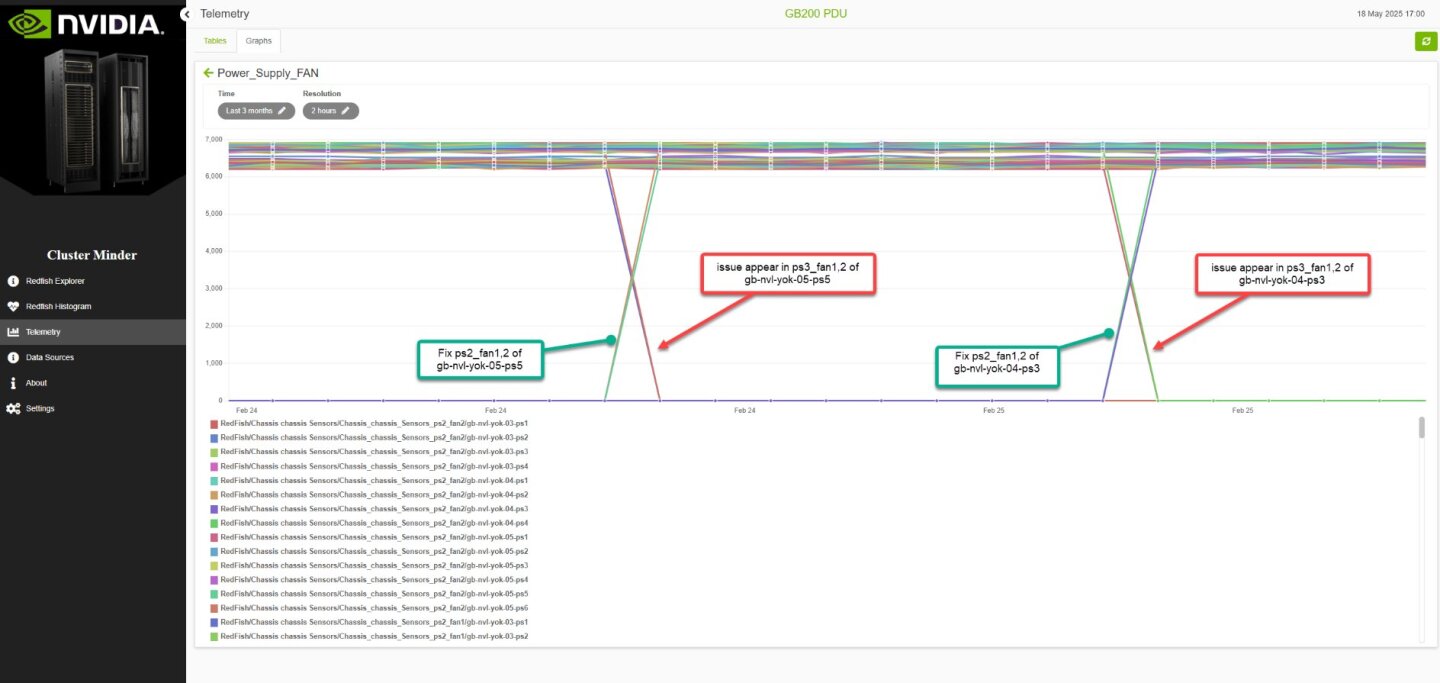
7.2 Switch Telemetry Example
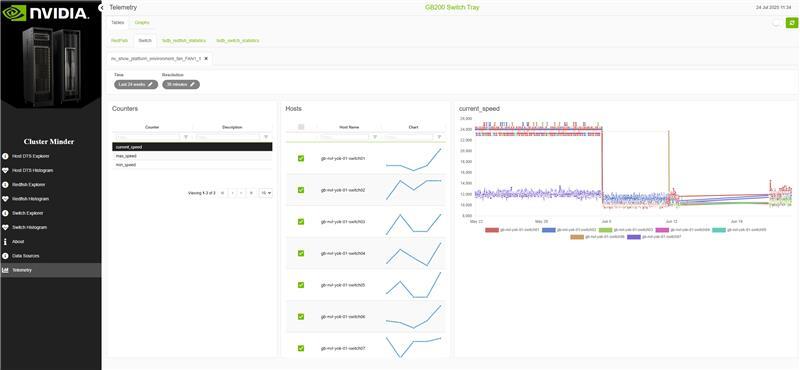
7.3 Additional Features
7.3.1 Graphs Tab
Allows user to create a custom graph. To do so users should navigate to the “Graphs” tab. Here, they can press the

7.3.2 Dashboards
Dashboards in this project enable users to collect and organize specific graphs they create, grouping related visualizations within a single dashboard for easier access and comparison. This allows users to save sets of graphs that serve a common purpose and effortlessly switch between multiple dashboards to manage different groups of visualizations tailored to various needs.
Dashboard example

ClusterMinder’s analytics page allows users to view suspected errors and group differences reports in one aggregated location as well as viewing common suspected errors and common group differences. Analytics page also provides alerts (currently only CDU supported) for various user determined scenarios. This page provides ease of use viewing of all the text reports in a singular location as well as important user tailored alerts.
There is a switch button that enables component view.

